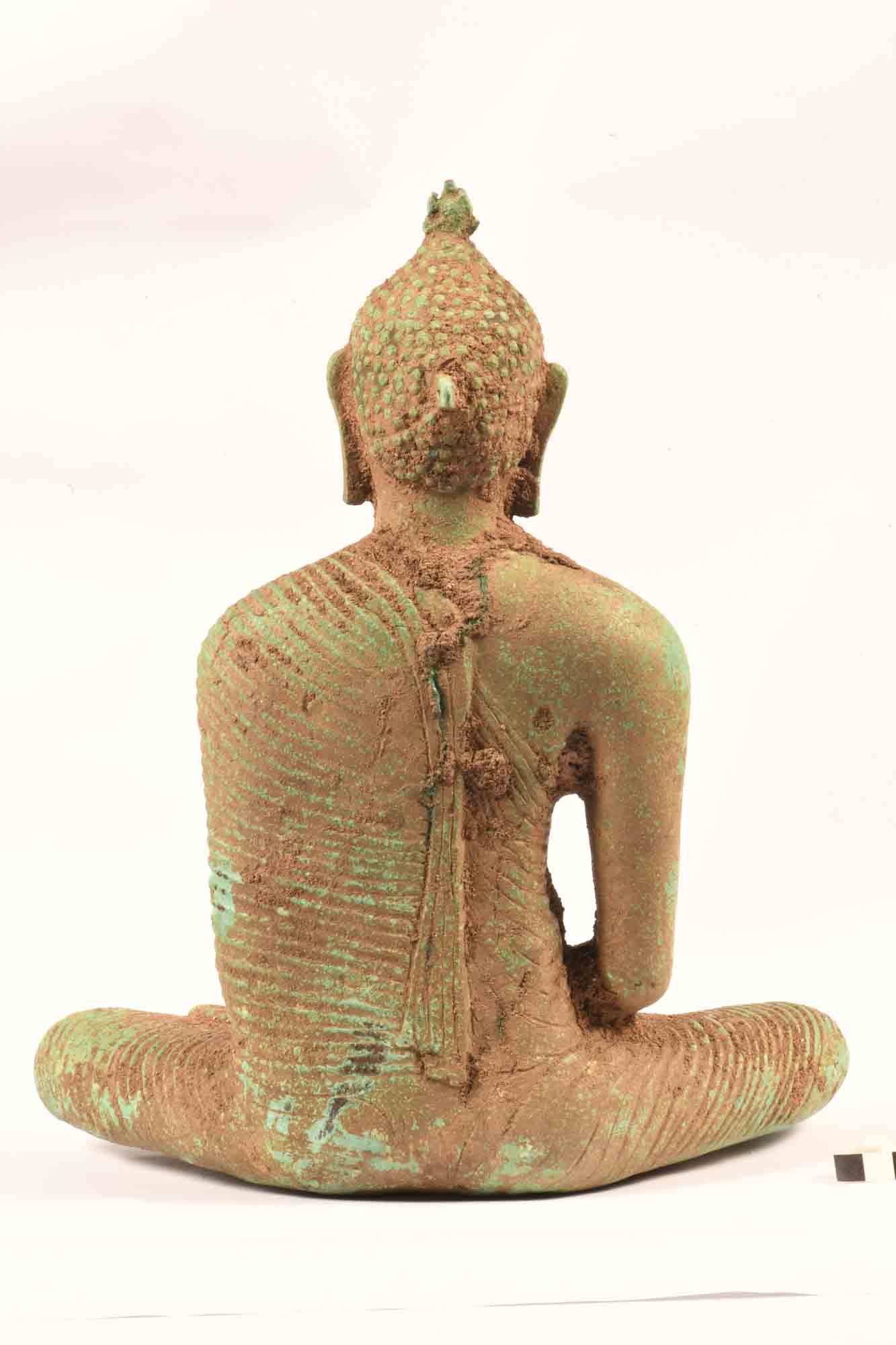This Seated Samadhi Buddha was part of an accidental discovery in the mound excavated at a paddy field where the soil needed for brick production was dug for the Deegawapiya Stupa Conservation Project.
This statue, which is in very good condition, is made of some metal. Although it is not possible to state the exact period, according to the features of the statue, it appears that it belongs to the post-Anuradhapura period. According to the measurements, the height is 35 cm, and the width of the seat is 30 cm. The height from waist to arm is 18 cm, from arm to headdress is 12 cm, from the hair-knot (Ushnisha) to the Siraspatha (headdress) is 3 cm whereas the height from waist to knee is 18 cm. The Buddha is seated in virasana and displays the Dhyana mudra (gesture of meditation) The garments of the image are with folds, and the statue is full of artistic features.
In particular, the fine proportional accuracy of the face, the hair-knot feature, and a five-leafed headdress (Siraspatha ) can be identified. Curly hair (Kundalakara), half eyes, smile (Mandasmitha), thick lips, and long earlobes (Lambhakarana) are well depicted. The nipple area is designed in Padmakara (Full lotus) style. The robe is worn on one shoulder (Ekansha Parupana) and the folds of the robe are created quite thickly. It is possible to think that the Uththama Dashathala of statue-making art (Chithrakarmashastra) may have followed.
This statue, identified by the former Regional Assistant Director of Ampara/Batticaloa, Mr. M. G. Ratnapala, has been handed over to the Chemical Conservation Division of the Sri Lanka Archeology Department for chemical conservation under the supervision of the current Regional Assistant Director of Ampara/ Batticaloa, Mr. D.S.A Munasinghe.
The seated Buddha statue was discovered from Deegawapiya Stupa Conservation Project
Hits: 2723








